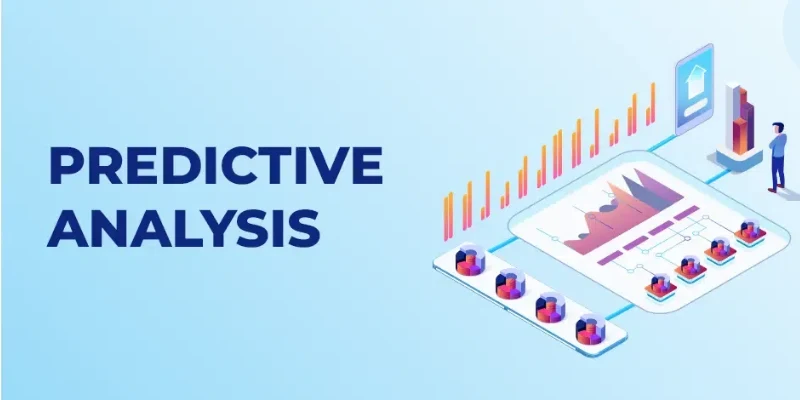
In a world where data drives every decision, businesses are no longer satisfied with just understanding past performance they want to forecast future outcomes with precision. This is exactly what predictive analytics delivers. By combining statistical modeling, machine learning algorithms, and advanced data mining techniques, predictive analytics enables organizations to anticipate trends, uncover risks, and seize growth opportunities.
For data analysts and budding professionals, mastering predictive techniques has become a core requirement. Whether in healthcare, banking, retail, or technology, these skills open pathways to high-value careers. If you are looking to build expertise in this space, joining a Business Analytics Course in Chennai is an excellent way to develop both theoretical knowledge and hands-on practical skills.
1. Regression Analysis
Regression remains one of the foundational tools in predictive analytics. It helps determine relationships between variables and estimate future outcomes.
- Linear Regression is commonly used to forecast values such as predicting sales revenue based on advertising spend.
- Logistic Regression is ideal for classification problems, such as whether a customer will subscribe to a service or not.
Its simplicity and interpretability make regression an essential skill for every analyst.
2. Decision Trees
Decision trees allow analysts to visually map out decisions and their possible outcomes. They split data into branches based on specific conditions, leading to a prediction.
A decision tree, for example, might be used in the banking industry to determine loan eligibility based on factors like work status, income, and credit score. Because of their clarity, decision trees are widely used for classification tasks where interpretability is crucial.
3. Random Forests
Random forests take decision trees a step further by creating an ensemble of them. This method reduces overfitting and increases accuracy. Each tree contributes to the final prediction, making it more reliable.
They are extensively applied in fields like fraud detection, risk management, and customer behavior prediction.
4. Time Series Forecasting
When data is linked to time, forecasting techniques become indispensable. Analysts use time series models to predict demand, revenue, or even weather conditions.
Popular approaches include:
- ARIMA models for trend and seasonality.
- Exponential Smoothing for quick forecasts.
- Seasonal Decomposition for understanding periodic patterns.
For businesses, these techniques play a key role in resource planning, pricing, and inventory control.
5. Clustering Algorithms
Clustering groups similar data points together, helping businesses uncover hidden structures. Though often considered exploratory, clustering significantly improves predictive models.
- K-Means Clustering assigns data into fixed clusters.
- Hierarchical Clustering builds a tree-like grouping structure.
Retailers often use clustering to segment customers, making campaigns more targeted and predictive.
6. Neural Networks
Inspired by how the brain functions, neural networks handle large and complex datasets with remarkable accuracy.
Applications range from natural language processing and image recognition to fraud detection and recommendation systems. A subclass of neural networks called deep learning has revolutionized industries by making extremely complex prediction models possible.
7. Ensemble Learning
Ensemble methods combine multiple models to generate stronger predictions.
Techniques like bagging, boosting, and stacking are particularly effective. For example, XGBoost and Gradient Boosting Machines (GBM) are top performers in competitions and real-world business scenarios.
8. Survival Analysis
Survival analysis predicts the time until a specific event occurs. While widely used in healthcare for patient survival studies, it is also applied in predicting customer churn or estimating product lifespan.
This approach gives organizations a time-based perspective on risk and opportunity.
9. Text Mining and Sentiment Analysis
With the explosion of unstructured data, particularly text from reviews and social media, text mining has become indispensable.
Sentiment analysis helps determine public opinion by classifying feedback as positive, negative, or neutral. Companies leverage this to anticipate customer reactions and shape strategies.
10. Anomaly Detection
Anomaly detection identifies unusual patterns that don’t align with normal behavior.
Examples include detecting fraudulent credit card transactions or flagging system intrusions. Using clustering, isolation forests, or statistical rules, anomaly detection helps safeguard businesses against risks.
11. Bayesian Modeling
Bayesian approaches rely on probability to predict outcomes, continuously updating as more data becomes available.
These techniques are especially helpful in high-uncertainty domains including healthcare, cybersecurity, and financial forecasting.
12. The Importance of Data Visualization in Business Analytics
Even the most advanced predictive models lose their value if insights cannot be communicated effectively. This highlights the Importance of Data Visualization in Business Analytics.
Tools such as Tableau, Power BI, and Python visualization libraries enable analysts to present predictions in clear, interactive formats. Visualization ensures complex algorithms are translated into actionable strategies that decision-makers can understand and act upon.
Predictive analytics is reshaping industries by empowering organizations to anticipate challenges and act with foresight. From simple regression to complex neural networks, these techniques equip analysts with the ability to solve real-world problems.
For aspiring professionals, enrolling in the Best Training Institute in Chennai offers structured learning, mentorship, and hands-on practice in predictive analytics and related tools. By mastering these skills, analysts not only boost their career prospects but also drive meaningful transformation in the organizations they serve.
As the demand for predictive analytics grows, professionals who combine technical expertise with strong visualization skills will continue to thrive making this field one of the most future-proof career choices today.
Also Check: How to Use Data Analytics for Market Research
